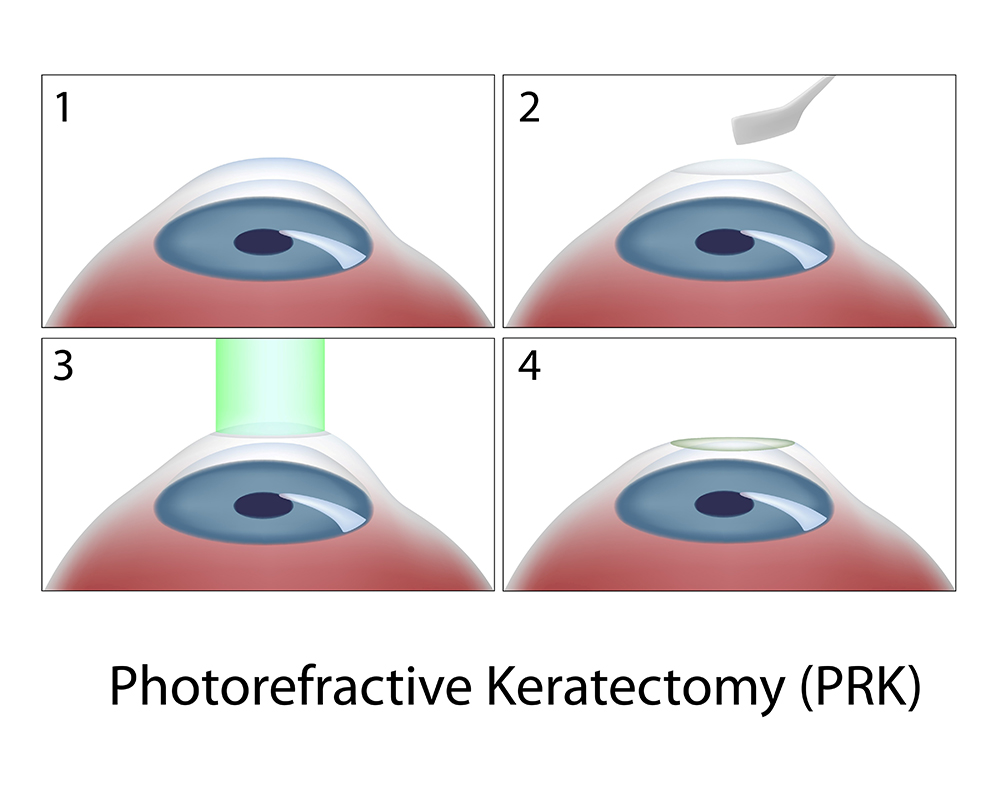Photorefractive Keratectomy (PRK)
Photorefractive Keratectomy (PRK) is a laser surgery for correcting low to moderate amounts of nearsightedness and astigmatism. PRK is a technique in which the central portion of the outermost layer of the cornea is removed. Then the underlying corneal bed is resurfaced using a laser. PRK is the simplest and most straightforward laser refractive procedure for the surgeon to perform.
To perform PRK, the surgeon uses the excimer laser to vapourize away microscopic layers of tissue from the surface of the eye. By modifying the shape of the cornea, light rays can focus correctly within the eye to provide clear vision. PRK is less invasive than LASIK since only the surface tissue of the eye is affected.
"All aspects of entering the clinic, having surgery to being discharged were well done. Change nothing – all services were very well considered and achieved."
Gloria C.
For the procedure, the eye is numbed with topical anesthetic drops on the eye to “freeze” it for a painless correction.
The cornea consists of different layers of tissue. The surface layer, known as the epithelium, is a soft, protective layer that regenerates quickly. Before laser correction, the surgeon removes this outer membrane with an instrument. Within a few days of the surgery, the epithelium regenerates itself, again forming a protective layer over the eye.
The interior part of the cornea, known as the stroma, does not regenerate itself when removed. For PRK, the surgeon programs and positions the laser to remove a small portion of this tissue to permanently change the shape of the cornea. In most cases, only 5 to 15% of the corneal thickness is treated, leaving the structural integrity of the cornea intact. The cool laser beam vapourizes tissue away, one microscopic layer at a time, without burning or cutting. Since the excimer laser light is created at a specified wavelength that does not pass through the cornea, no other part of the eye is affected.
After the tissue has been removed, the surgeon places a special soft contact lens on the eye to protect it for the first few days of healing. This lens remains on the eye both day and night for up to three days, and in a few cases, can be easily left in place for up to five days.

The laser correction itself usually takes less than one minute per eye, although the patient is in the surgery suite for about 15 minutes.
To speak to a Patient Counsellor about this procedure, please contact us.





